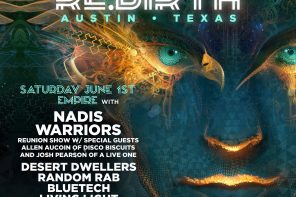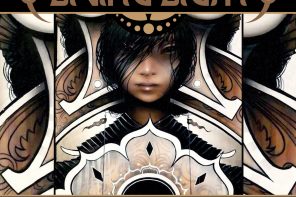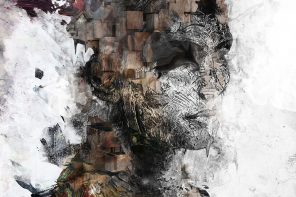[soundcloud params=”auto_play=true&show_comments=true&color=0ac4ff”]https://soundcloud.com/plantrae/sets/taproot-ep[/soundcloud]
Zak, also known as producer/violist Plantrae, has been immersed in musical culture and the performing arts since the tender young age of 5. His musical talents consist of viola, guitar, mandolin, and piano composition, as well as numerous forms of drumming. After years of hard work, Zak became most accomplished at the viola, accumulating a long list of orchestras, performances, and even commercial work in the film industry. In the early 2000’s Zak discovered electronic music, this new found love allowed him to dive right in, and for the last 10 years has been experimenting with various modes of recording, production, arraignment, numerous electronic and acoustic band projects, as well as DJ’ing. In the spring of 2012 Zak Hoya launched Plantrae, and in a few short months has brought his signature sound to many eager ears, performing at numerous shows and festivals last season, including Human Nature and What The Festival in OR, Sonic Bloom in CO, and Cognitive Awakening in CA. Plantrae is a fresh, unique, and playful sound experience comprised of a funky, stretchy midtempo foundation and live viola improvisation that embodies the spirit of classical, swing, and folk. His immediate popularity goes to prove that the sphere of electronic music is constantly expanding and reminding listeners everywhere that real musical instruments are still a force to be reckoned with on the dance floor.
[LiS] You describe your musical style as “Midtempo Folkbass” – How would you describe that soundscape?
[Plantrae] A trio of wandering minstrels playing mandolin, lute, and a drum machine while strolling through a sentient forest of ancient subwoofers. How’s that for a soundscape? Haha, it’s basically a fusion of glitch and folk, primarily residing in the midtempo spectrum. It comes from the heavy bass elements from glitch hop, and the melodic, instrumental energy from folk.
Can you elaborate on this new and revolutionary style: folkbass music – uniting organic sounds with intricate electronics?
Well I think revolutionary is a big word, as there are many artists who have done this before me, but I think it’s totally limiting to reduce our sonic palette to only what can be generated by machines, when we have thousands of years of amazing acoustic music technology and culture behind us. To forget and ignore those is to really ignore our human ethos and connection with physical reality.
Where does your style originate from? Is it tied to any specific culture?
The only culture I can identify with is one of the Earth and of the the forests of Cascadia (the Pacific Northwest), where I’ve lived my whole life. That being said, my music is an amalgamation of every sound, musical and otherwise, that I’ve ever heard, so there are a lot of subtle influences that emerge. For example I listened to a lot of bluegrass as a young child, and while it may not be obvious, that is a part of my musical identity and is reflected in the music I write.
Something about your musical style is exhilarating yet meditative, playful yet hauntingly beautiful – How do you do it?
Ha, I really have absolutely no idea! Although I have a hunch it has to do with combining electronic elements with acoustic ones. A big focus for me musically is integrating different intensity levels in music. So you might have an immense bassline, wave-like in power, and then a delicate harp melody floating over the top, and maybe some bouncy, acoustic drum fills blending the two together. This creates a balance musically and emotionally where it’s vibrant and energetic but not overwhelming. The viola helps a lot to balance this equation.
How long have you been playing the viola?
Since I was 5. So I guess about 19 years, although I have taken breaks here and there. I really didn’t get passionate with it until I discovered I could combine it with electronics.
Who are your biggest musical influences and inspirations?
Electronically I would say Beats Antique, Tipper, Ott, and Bassnectar’s early works. Although there are countless others. Russ Liquid started out in my hometown so that was big too, seeing him play the trumpet over a long line of subs. Acoustically I was definitely influenced by classical as that was how I learned viola, but also bluegrass, reggae, flamenco, metal, swing, and folk. And by folk I don’t mean “American” folk, I mean the music of indigenous cultures around the world.
What is your vision, both musically and spiritually, and how do you plan to spread your message?
I would like to see humyns living with the Earth instead of on it. And I have no delusions that I’m going to “change the world,” but the reality is that humyns need to change or we will destroy this planet and ourselves, and we can obviously already see this happening all around us. My goal with music is to induce people to have an emotional reaction, which will motivate them to actively work towards having a healthy relationship with the Earth. I’ve learned that you can’t tell people what to do, but I can put forth information or “signposts” in my travels throughout the world, and it is up to the individual to decide whether or not they think that information is valid, and follow those signs or not.
What is the most united compassionate, selfless community movement you have been a part of?
I would definitely say the radical anarchist community here in Cascadia (the Pacific Northwest) and beyond. I had a pretty hardcore “alternative” life growing up and I found it very difficult to integrate with the standard roles that are presented in modern urban capitalism. I found that those who identify with anarchy were able to accept who I was with all my faults and help me grow into a functional humyn with a realistic understanding of the world. Anarchy is an idea based on organic social organization that reflects the way biotic systems function. A biotic system is made up of living components of a community. So in a given ecosystem you have certain species that play certain roles, or niches, in their biosphere, but no one assigns each species to a “job” the way humyns do, they just naturally evolve into a balance that works for the whole of the ecosystem. In this same way, humyns can have a social arrangement that mimics this process, where each individual is free to develop the best way for them to interact with the overall social organism. Many indigenous cultures throughout the world have utilized this model successfully for thousands of years and some still do to this day.
“This will be our reply to violence: to make music more intensely, more beautifully, more devotedly than ever before.” – Leonard Bernstein
Due to the recent events in our hometown Boston, can you respond to this quote?
Yes, I wholeheartedly agree with Leonard, it is incredibly important that we continue to make music in all the ways he describes, both as a way to heal and inspire solutions. It’s also crucial that we recognize the ways in which our current lifestyles inherently rely on institutionalized violence simply to exist. Consider the myriad of ways this happens, for example in my bioregion, the salmon have been decimated in order to feed humyns that live in cities, or the wholesale destruction of the Niger delta and its indigenous population for oil extraction, or just this last winter, when 50% percent of all industrial beehives died from exposure to man-made pesticides. This recent event in Boston can be looked at as a mere drop in a sea of violence that our little “civilized” humyn boat is floating on. We need to seriously take a look at all the violence that is happening on this planet, whether it’s directed at plants or animals or soil or humyns, and really be honest about the root causes, which overwhelmingly turns out to be industrial urban society. Only then can we begin to eliminate the systemic violence and work towards a healthier lifeway.
Can you give me an overview of upcoming projects, tours, album releases, collaborations:
Well I just released an EP called Taproot with Street Ritual and finished my first tour of California, which went great, and I have a bit of a break until festival season starts which I guess is right around the corner.
So far I have been booked for a fair amount of festivals this summer, and I’ll name a few that stand out:
Sonic Bloom (CO) 6.13.13, Enchanted Forest (CA) 6.28.13, Firefly Festival (AZ) 6.29.13, Human Nature (OR) 6.30.13, Luminosity (B.C.), Photosynthesis, Six (WA) 7.19.13, Gratifly (SC) 7.27.13, Bass Mountain (CA) 8.13.13, Pacific Fire Gathering (OR) 9.13.13, Symbiosis (CA) 9.19.13.
I would definitely recommend folks check out Luminosity, it’s their first year and it’s an amazing crew up in northern Cascadia (B.C.) which is an incredibly beautiful land base.
I have also have a couple of collaborations in the works, I’ll be doing a track for an episode of The Bloom Series, as well as a compilation coming out in may called Mycelium Music Volume 2.
Mycelium Music is a music collective based out of Olympia, WA that incorporates educational elements in its offerings, specifically focused around mycoremediation technologies, using fungus to clean up oil spills and break down toxic pollution.






